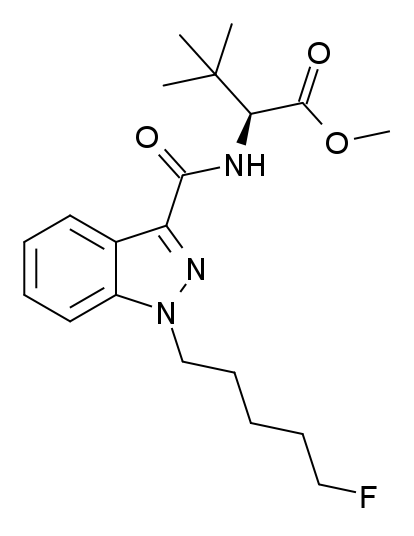The world of designer drugs and research chemicals is fraught with risks, and a critical review of 5F-ADB (5F-MDMB-PINACA) sellers highlights significant concerns associated with these online vendors.
One of the most pressing issues with 5F-ADB sellers is more oversight and regulation in the online marketplace. Many of these vendors operate in a legal gray area, exploiting loopholes in drug laws to sell these substances without proper quality control or safety measures. This leaves buyers vulnerable to purchasing products that may be impure, adulterated, or contaminated, posing severe health risks.
The credibility of 5F-ADB sellers is another significant concern. Given the recent emergence of designer drugs like 5F-ADB, vendors may need sufficient knowledge or expertise about these compounds. This knowledge gap can lead to accurate product descriptions, proper dosage recommendations, and the dissemination of misinformation regarding the substance’s effects.
Furthermore, some 5F-ADB sellers resort to questionable marketing tactics by labeling their products as “legal highs” or “research chemicals,” creating a false sense of security for potential buyers. However, the legality of these substances is often in flux, and individuals may unknowingly break the law by purchasing or possessing them.
Ethical considerations also come into play. Selling research chemicals like 5F-ADB without comprehensive information on their potential risks and responsible usage guidelines demonstrates a lack of responsibility toward consumers’ well-being.
SUMMARY
5F-ADB, also referred to as 5F-MDMB-PINACA, is a synthetic cannabinoid belonging to the indazole-3-carboxamide family. It has gained notoriety for its use as an active component in synthetic cannabis products and its availability for sale as a designer drug online.
This compound acts as a potent agonist of the CB1 receptor, although its selectivity for this particular target remains unclear. The emergence of 5F-ADB can be traced back to November 2014, when it was first identified in post-mortem samples obtained from an individual who had tragically passed away after using a product containing this substance. Further investigations revealed that 5F-ADB was present in ten individuals who had experienced unexplained drug overdoses in Japan between September 2014 and December 2014. This raised concerns about the potency and toxicity of 5F-ADB, as the substance was detected at deficient levels in tissue samples, suggesting it might be significantly more dangerous than previously known synthetic cannabinoid drugs.
In 2018, 5F-ADB garnered attention as the most frequently identified synthetic cannabinoid in seizures conducted by the Drug Enforcement Administration (DEA). Notably, 5F-ADB was also detected in cannabidiol (CBD) products from a US-based CBD manufacturer during the same year.
The prevalence and potential risks associated with 5F-ADB underscore the need for rigorous oversight and regulation of synthetic cannabinoids. The substance’s unpredictable effects and toxicity emphasize the importance of exercising caution when dealing with designer drugs, and individuals are strongly advised to prioritize their health and safety above all else.
| Identifiers | |
|---|---|
| showIUPAC name | |
| CAS Number | 1715016-75-3 |
| PubChem CID | 101895417 |
| ChemSpider | 32741709 |
| UNII | FD7BD1M9FYUN52BPP7RB(racemate) |
| CompTox Dashboard (EPA) | DTXSID201009974 |
| ECHA InfoCard | 100.257.468 |
| Chemical and physical data | |
| Formula | C20H28FN3O3 |
| Molar mass | 377.460 g·mol−1 |

Deaths
Between 2015 and 2017, there have been reports linking 5F-MDMB-PINACA to 25 fatalities in Europe.
Legal status
In the United States, 5F-ADB is classified as a Schedule I controlled substance.
Additionally, 5F-ADB was included in the list of banned drugs in Japan in December 2014.
FAQ
1. What is 5F-ADB?
- 5F-ADB is a synthetic cannabinoid belonging to the indazole-3-carboxamide family. It is often used as an active ingredient in synthetic cannabis products and has gained notoriety as a designer drug.
2. Is 5F-ADB legal?
- The legal status of 5F-ADB varies by country and jurisdiction. In the United States, it is classified as a Schedule I controlled substance, making it illegal to possess, sell, or use. Before considering any involvement with this substance, it is essential to check your local laws and regulations regarding 5F-ADB.
3. What are the effects of 5F-ADB?
- 5F-ADB is reported to produce effects similar to THC, the active compound in cannabis. These effects may include altered perception, relaxation, and, in some cases, anxiety and paranoia. However, it is essential to note that 5F-ADB’s effects can be unpredictable and potentially harmful.
4. Is 5F-ADB safe to use?
- The safety of 5F-ADB is a subject of concern due to reports of severe adverse effects and fatalities associated with its use. It is considered significantly more toxic than earlier synthetic cannabinoid drugs. Its use should be avoided, and individuals are strongly discouraged from experimenting.
5. Where can I get 5F-ADB?
- We strongly advise against attempting to purchase 5F-ADB or similar substances. Obtaining synthetic cannabinoids from unverified or unregulated sources can be extremely dangerous, legally and health-wise. Prioritize your safety and legality above all else.
6. Can 5F-ADB be detected in drug tests?
- Standard drug tests typically do not screen for specific synthetic cannabinoids like 5F-ADB. However, specialized tests may be able to detect its presence. Knowing the potential legal and employment consequences of consuming such substances is essential.
7. What are the risks associated with 5F-ADB?
- 5F-ADB has been linked to severe health risks, including fatalities. Reports of adverse reactions, such as seizures and unexplained drug overdoses, have raised significant concerns about its safety.
8. Is there any legitimate research on 5F-ADB?
- While some research may have been conducted on 5F-ADB for scientific purposes, it is primarily known and used as a recreational drug. Most information available about 5F-ADB pertains to its recreational use and potential risks.
References
- Anvisa (2023-07-24). “RDC Nº 804 – Listas de Substâncias Entorpecentes, Psicotrópicas, Precursoras e Outras sob Controle Especial” [Collegiate Board Resolution No. 804 – Lists of Narcotic, Psychotropic, Precursor, and Other Substances under Special Control] (in Brazilian Portuguese). Diário Oficial da União (published 2023-07-25). Archived from the original on 2023-08-27. Retrieved 2023-08-27.
- ^ Shevyrin V, Melkozerov V, Nevero A, Eltsov O, Shafran Y, Morzherin Y, Lebedev AT (August 2015). “Identification and analytical characteristics of synthetic cannabinoids with an indazole-3-carboxamide structure bearing a N-1-methoxycarbonylalkyl group”. Analytical and Bioanalytical Chemistry. 407 (21): 6301–6315. doi:10.1007/s00216-015-8612-7. PMID 25893797. S2CID 31838655.
- ^ Giorgetti A, Brunetti P, Pelotti S, Auwärter V (October 2022). “Detection of AP-237 and synthetic cannabinoids on an infused letter sent to a German prisoner”. Drug Testing and Analysis. 14 (10): 1779–1784. doi:10.1002/dta.3351. PMC 9804899. PMID 35918775. S2CID 251281159.
- ^ Banister SD, Longworth M, Kevin R, Sachdev S, Santiago M, Stuart J, et al. (September 2016). “Pharmacology of Valinate and tert-Leucinate Synthetic Cannabinoids 5F-AMBICA, 5F-AMB, 5F-ADB, AMB-FUBINACA, MDMB-FUBINACA, MDMB-CHMICA, and Their Analogues”. ACS Chemical Neuroscience. 7 (9): 1241–1254. doi:10.1021/acschemneuro.6b00137. PMID 27421060.
- ^ asegawa K, Wurita A, Minakata K, Gonmori K, Yamagishi I, Nozawa H, Watanabe K, Suzuki O (2014). “Identification and quantitation of 5-fluoro-ADB, one of the most dangerous synthetic cannabinoids, in the stomach contents and solid tissues of a human cadaver and in some herbal products”. Forensic Toxicology. 33: 112–121. doi:10.1007/s11419-014-0259-0. S2CID 45508189.
- ^ “Emerging Threat Report: Annual 2018” (PDF). Special Testing and Research Laboratory, Drug Enforcement Administration. Archived from the original (PDF) on 2019-08-01. Retrieved 2019-08-01.
- ^ Poklis JL, Mulder HA, Peace MR (January 2019). “The unexpected identification of the cannabimimetic, 5F-ADB, and dextromethorphan in commercially available cannabidiol e-liquids”. Forensic Science International. 294: e25–e27. doi:10.1016/j.forsciint.2018.10.019. PMC 6321772. PMID 30442388.
- ^ European Monitoring Centre for Drugs and Drug Addiction; Europol (2017). 5F-MDMB-PINACA (PDF) (Report). Luxembourg: Publications Office of the European Union. doi:10.2810/210307.
- ^ “Schedules of Controlled Substances: Temporary Placement of Six Synthetic Cannabinoids (5F-ADB, 5F-AMB, 5F-APINACA, ADB-FUBINACA, MDMB-CHMICA and MDMB-FUBINACA) Into Schedule I”. Drug Enforcement Administration. Archived from the original on 2019-10-17. Retrieved 2017-03-17.
